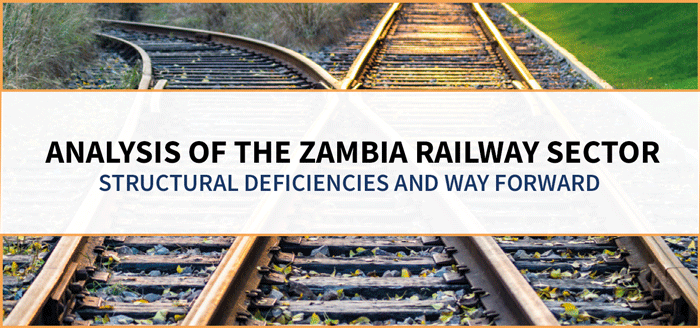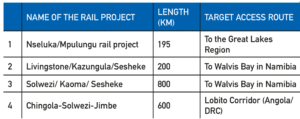The railway system in Zambia is an extensive network of surface transport connecting all major centers of economic activity and is strategically instrumental in facilitating enhanced trade and growth.
However, the railway systems network in Zambia has been operating at a sub-optimal level compared to its capacity.
Tanzania/Zambia Railway Authority (TAZARA) which is co-owned by Governments of Zambia and Tanzania covers approximately 1,900 km from Kapiri-Mposhi Zambia to Dares-slam in Tanzania.
Key Challenges in the Railway Sector:
- TAZARA and ZRL have insufficient locomotives and wagons. For instance, by 2014, ZRL had a total locomotive fleet holding of 37, out of which 24 were operational and the balance 13 were defective and extensively cannibalized (Rail News, 2017).
- The average speed of locomotives is about 40km per hour, which is too slow in modern business and commerce.
- Lack of reliability and has outdated infrastructure characterized by poor maintenance.
- Lack of coordination with regional railway companies. For instance, there is weak coordination between ZRL, TAZARA, Spoornet and other railway companies in the region.
- Rail shipments have also been criticized for lacking proper security.
Planned Railway Projects
The Zambian Government has realized the need for transport infrastructure development, particularly road and rail that would open up export opportunities.
- The Chipata-Petauke-Serenje Railway line was recently approved for construction to complete the link from the port of Nacala to the existing railway lines in Zambia and thereby establishing Chipata as a dry port on the eastern border of the country.
- The Zambian Government has committed itself to the development of railway sector through proposed construction and development of various railway lines as indicated in the table below:
Government Interventions to Increase Railway Freight
- The Government’s nullification of the concession with the Railway System of Zambia (RSZ) in 2012, which lead to an eighteen percent growth in the traffic of the ZRL between 2012 and 2017.
- In 2012, the Government decided to allocate about USD 120 million into ZRL in order to increase tonnage capacity and enhance the rolling stock. Consequently, tonnage carried was increased to 732,284 tonnes in 2013 and closed around the 959,956 tonnes in 2014 after ZRL allocated USD 81.8 million towards railway infrastructure and USD 38.2 million towards rolling stock in 2012.
- In October 2018, The Industrial Development Corporation (IDC) Board had approved an investment of $850 million into rail infrastructure and rolling stock for Zambia Railways Limited (ZRL). The investment was important because it was a wholesome package which attends to the entire capacity constraints of ZRL
-
Government brought into effect the Statutory Instrument to compel transporters of heavy cargo to move 30 percent of bulk cargo from road to railway in January 2018. This was done in a bid to optimize the transport sector and promote the sustainability of rail subsector.
Recommendations
Government has intentions of developing rail spurs in intracity transit systems. As PMRC we recommend that Government should strictly utilize Public-Private Partnership (PPP) to access private financing given the constrained fiscal space. Government needs to further explore other forms of engaging the private sector through;
- Service Contracts
- Infrastructure Construction and Maintenance
- Equipment Ownership and leasing
- Management Contracts
- There is need to dis-bundle the rail line operations, where rail infrastructure development and management are separated from operations by the creation of the Rail Development Agency of Zambia.
- The Government should continue with the maintenance and upgrading of the rail infrastructure to reach the desired speed of 80 kilometers per hour for freight trains and 120 kilometers per hour for passenger trains.
- Zambia should engage in Bilateral/Multilateral Railway Route management groups with other countries to collaborate on rail use and infrastructure development to increase volumes and ensure the suitability of the rail sector.
- Government needs to put in place regulatory bodies to monitor market performance, competition and even safety issues. Currently no regulator is installed in Zambia for the railway sector except the General inspector of railways, based in the Ministry of Communication and Transport.





